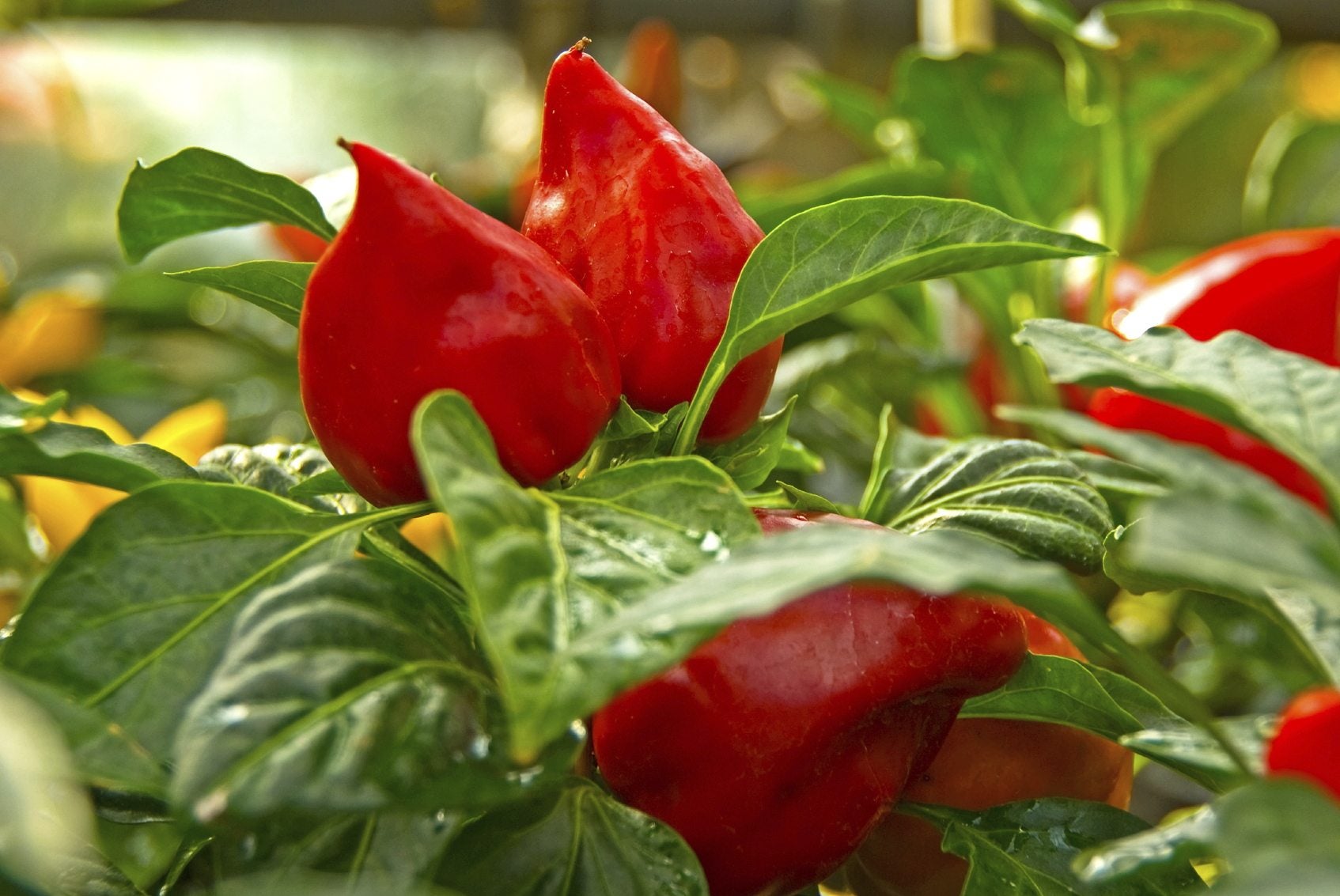Pimento Sweet Peppers: Tips For Growing Pimento Peppers

The name pimento might be a little confusing. For one thing, it’s also sometimes spelled pimiento. Also, pimento sweet pepper's binomial name is Capsicum annum, a nomenclature that is an umbrella for all the species of sweet and hot peppers. Regardless, if you love peppers, pimento pepper plants make a tasty, as well as ornamental, addition to the garden. So how to grow pimento pepper plants? Read on to learn more.
About Pimento Sweet Peppers
Pimento peppers are small, sweet, heart-shaped peppers that ripen to red in color. They only get to be about 1 ½ inches (4 cm.) across and are very mild with a Scoville heat rating of less than 500 units. Pimento stuffed green olives and pimento cheese are two very familiar packaged products found at the grocers that use this type of sweet pepper. Depending on the variety, plants may become large and bear hundreds of fruit, or they may be smaller, perfect for container gardening. Like all peppers, growing pimento peppers thrive in hot weather in fertile soil with consistent moisture and a long growing season.
How to Grow Pimento Peppers
Pimento peppers can be grown from seed or transplants.
Seed started plants
For seeds, sow ¼ inch (6 mm.) deep in a well-draining starting mix. The seeds like it hot, between 80 and 85 degrees F. (26-29 C.), so use a heated germination mat. They also love light, so put them in a sunny location with plenty of southern or southwestern exposure and/or provide them with some supplemental artificial light. Start seeds about eight weeks prior to the last frost of the spring in your area. Seedlings should emerge within 6 to 12 days. When the soil has warmed outside, over 60 degrees F. (15 C.), set the plants out two to three weeks after the last average frost in your area. Don’t rush getting the plants out in the garden. Temperatures that are too cold or too hot will affect fruit set. Nighttime temps below 60 degrees F. (15 C.) or even above 75 degrees F. (23 C.) may reduce fruit set.
Transplants
To transplant starts, prepare the garden by amending it with a 1 inch (2.5 cm.) layer of compost tilled into the soil about a foot (31 cm.). Choose a sunny area with well-draining soil. If you are using a container, be sure it has drainage holes and that the pots are at least 12 inches (31 cm.) deep. Space plants 18 inches (46 cm.) apart in rows that are 30 inches (77 cm.) apart. Set the plants slightly deeper than they were growing and firm the soil around the roots. Water transplants in well. Try watering with compost tea, which will provide phosphorus and improve blossoming, hence, fruiting. Plant one plant per 12 inch (31 cm.) pot when container gardening.
Caring for Pimento Plants
Lay a 1 inch (2.5 cm.) layer of mulch around the growing pimento plants to retain moisture. Hot, dry wind and dry soil will stress the plants causing them to drop immature fruit or even prevent fruit set. Keep a consistent irrigation schedule during the growing season. Calcium deficiency causes blossom end rot. The calcium in the soil must be dissolved to make it available to the plant. Magnesium is also a necessary mineral that enhances pimento growth and production but is often lacking in soils. Use a teaspoonful of Epsom salts mixed into the soil around the plants to boost magnesium levels. Side dress the plants just as the first fruit sets. Fertilize every two weeks by side dressing, or foliar feed with a diluted liquid organic fertilizer every one to two weeks. Caring for your pimento plants in this manner, along with some good weather, should bless you with an abundance of these tasty sweet peppers that can be canned, frozen, roasted, or dried to be used all year long.
Gardening tips, videos, info and more delivered right to your inbox!
Sign up for the Gardening Know How newsletter today and receive a free copy of our e-book "How to Grow Delicious Tomatoes".

Amy Grant has been gardening for 30 years and writing for 15. A professional chef and caterer, Amy's area of expertise is culinary gardening.
-
 Looking For Plants To Give You The Soft And Fuzzies? Try These 5 Fuzzy Leaf Plant Options
Looking For Plants To Give You The Soft And Fuzzies? Try These 5 Fuzzy Leaf Plant OptionsLovers of texture, drama, silver foliage and tactile plants will adore these special sensory garden additions. These fuzzy leaf plant options will leave you all aglow
By Susan Albert
-
 Get Ready For A Summer Of Hummers! Grow These Full Sun Hummingbird Plants and Flowers
Get Ready For A Summer Of Hummers! Grow These Full Sun Hummingbird Plants and FlowersIf you’re lucky enough to enjoy a sunny backyard, make sure you are maxing out on your pollinator opportunities and grow these full sun hummingbird plants and flowers
By Tonya Barnett